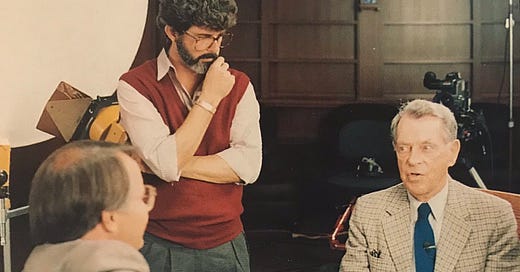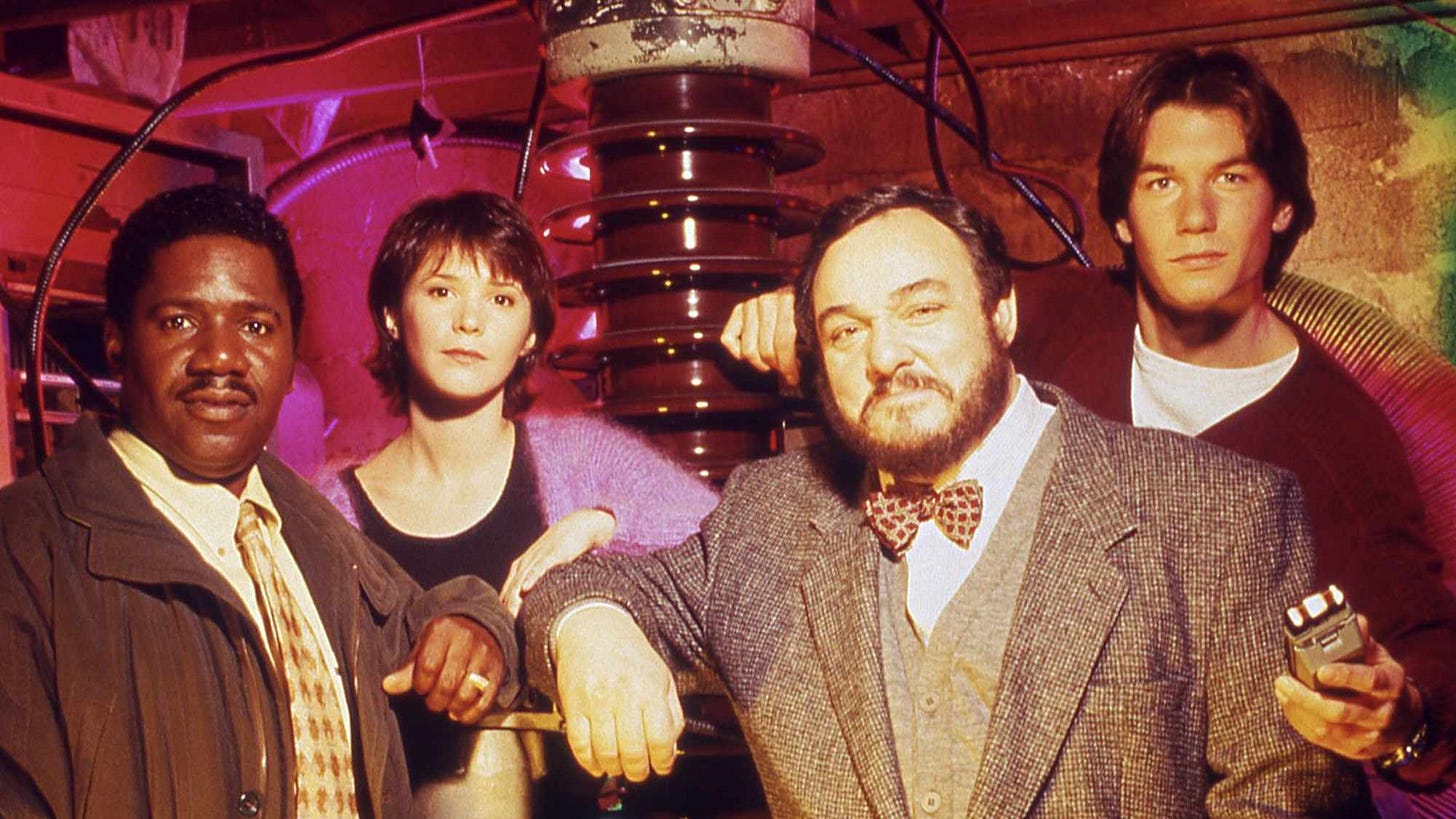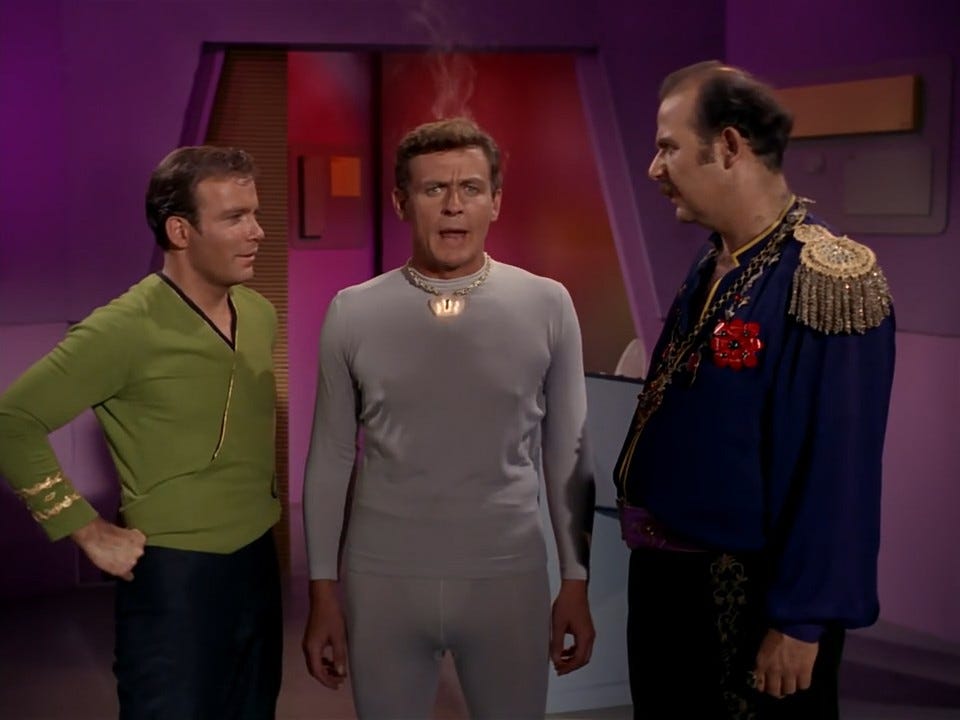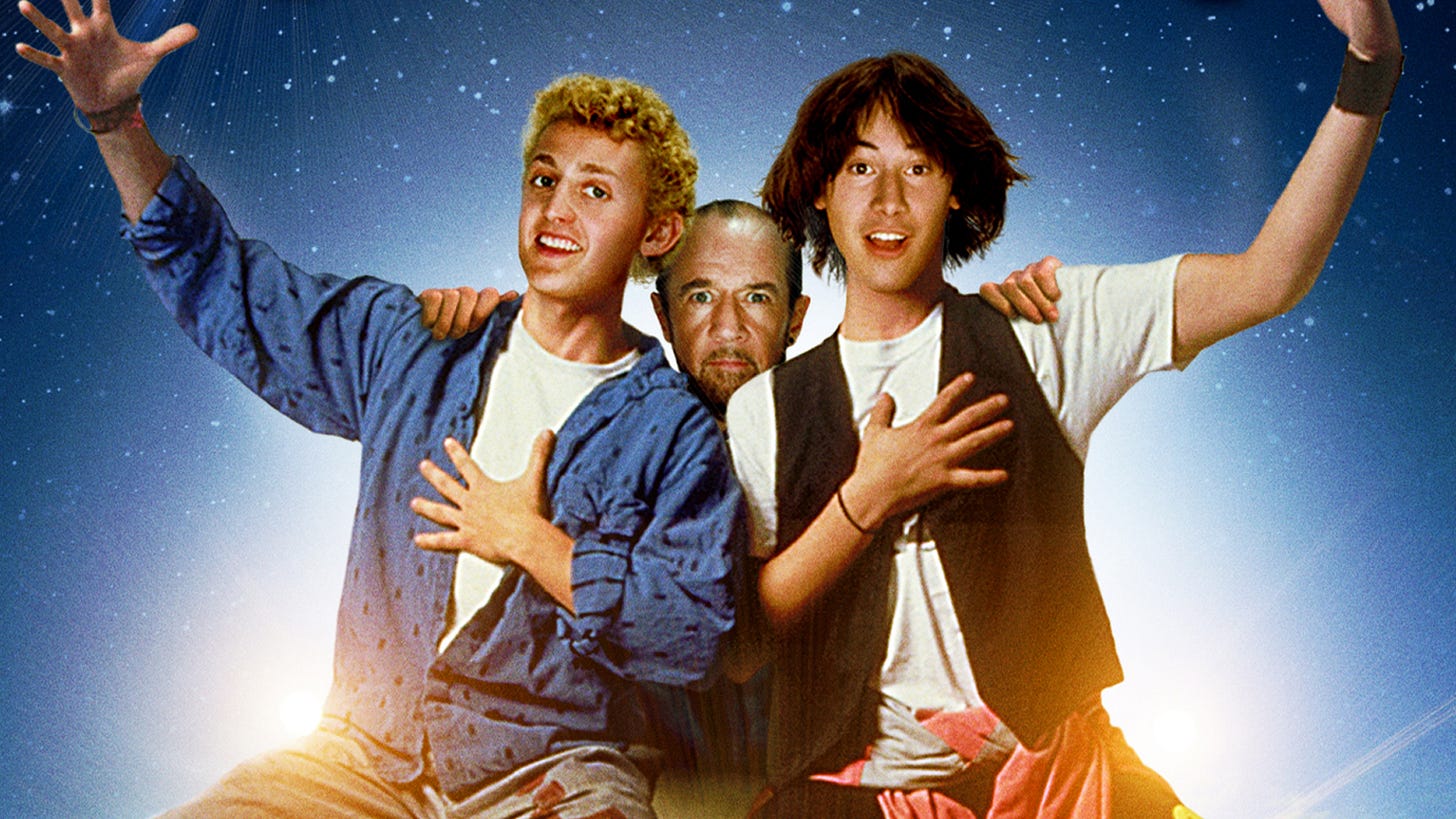On Becoming Fictional Characters
The sheer dankness of the Hero's Journey in pop sci-fi/fantasy, and the risks of self-divination there-posed.
As I have explained in my introductory post, in 2017 I experienced many overwhelming, debilitating delusions during a protracted psychosis. Fortunately, I was able to keep the worst of them mostly to myself.
The onset of psychosis was, for me, an explosion of meaning everywhere, inside and out. In biochemical terms, psychiatry today would explain it as a neurochemical dysregulation. In Malady of the Mind, Dr. Jeffrey Lieberman highlights a paper by University of Toronto professor Shitji Kapur, who developed a “salience model” to unite the relation of the internal experience of schizophrenia with neurobiology and pharmacology.
Salience refers to the process by which environmental stimuli and our thoughts combine to direct our attention and drive our motivation and behavior. The attribution of salience, in effect, assigns meaning to our perceptions and experiences. Dopamine plays a central role in this process, essentially managing the conversion of the neural representation of an external stimulus from a neutral piece of information into something attractive or aversive, meaningful or insignificant. Under normal circumstances, the release of dopamine is triggered by stimuli, and the attribution of salience is driven by context. In psychosis, however, excessive dopamine is released in response to, or even independent of, stimuli; the normal process of salience attribution is usurped, leading to aberrant assignment of salience to both external events and internal representations. Instead of mediating contextually relevant saliences, dopamine becomes, in the psychotic state, a creator of (aberrant) saliences.
…if you have schizophrenia, stimuli that wouldn’t normally seem relevant or warrant salience are assigned importance. Conversation overheard from an adjacent table is interpreted as being about you. When you glance around the restaurant, you think that anyone who happens to glance back is watching you. The waiter serves your dessert last, and you think this is done to disparage you.
(Let’s keep this idea in mind when we return later to look at some of the work of John Vervaeke and his articulation of the “meaning crisis” in contemporary Western culture. Here are some scatterbrained preliminary thoughts.)
My story of Pure Pete represents a possible end-result to the attempt to make sense of this wild influx of meaning. He interprets his psychosis as divine revelation. I’ve known more than a few Pete’s through-out my life. Without dwelling on the subject, the tragedy of seeing friends undergo sudden changes and begin attributing supernatural powers to themselves is a heavy one, especially in youth. I’ve seen it several times among intimate relations, and I’m sure everyone living in a city knows it among those they pass in the streets, or serve in certain social roles.
Comparative Anthropology
The Myth and Ritual School: J.G. Frazer and the Cambridge Ritualists is a wonderfully helpful overview of the genesis of the modern anthropological understanding of “myth,” written by Robert Ackerman in 1991. It is also an indispensable preface to the story of how Joseph Campbell’s hero’s journey has become, it seems to me, the dominant archetypal story in popular culture today. I’ll take some liberties in retelling it—so get the book and read it yourself.
In a nut-shell, anthropologists from the West spread across the globe alongside the spread of colonialism in the 19th century and studied the stories of the many various cultures encountered within, as Conrad’s Marlowe puts it discussing his childhood infatuation with maps, “the blank spaces on the earth.” Heart of Darkness refers not just to the frontier of the Congo pushing deep into the heart of Africa, but also the deepest part of the human psyche, the unconscious parts of our mind beyond the access of our conscious cognition/recognition.
The push into the “dark” corners of the globe, where anthropologists found with new stories and cultures and depictions of human arrangements untouched by industrialism or Western culture, was more than just cartography. It was equally a journey inwards into new ideas about what we were as humans beneath the self-important facade of civility: of being civilized.
It was the first attempt by the West at properly understanding and appreciating what today is termed indigenous ways of knowing, albeit in a second-hand, condescending sort of way. Unlike today, members of these cultures were not invited into advisory or teaching positions at colonizer institutions!
Nevertheless, the result was an expansion of an appreciation of just what humanity was, is, and potentially could be. Scottish Anthropologist Sir James Frazer compiled many of these anthropological reports, finding common patterns which, it was thought, reflected something universal about the deep, unconscious parts of the human psyche which existed across all cultures. And Joseph Campbell, in The Hero with a Thousand Faces, synthesized all this with his interpretation of both Occidental (Western) and Eastern religion into his account of the hero’s journey.
The hero’s journey is, as you likely know, the basis for Star Wars and Harry Potter and The Barbie Movie and, more or less, provides structure to just about every other fantasy story pop culture has created.
The most basic structure of the hero’s journey is the descent into chaos in search of order, or of meaning. And, subsequently, the narrative diverges between East and West. In Campbell’s reductionist distillation, the Eastern story might end with, more or less, the Buddha finding enlightenment and spending the rest of his life cross-legged under a bodhi tree in meditation—a personal salvation. The Hindu god Muchukunda, he writes, ends his journey this way, burning to ash any who attempt to draw him back to the land of the living.
In most hero’s journeys, though, that is only the half-way point. After competing the quest for enlightenment, the hero must then return with the goods. In other words, after having saved themselves, they must then come back and save everyone else. The most obvious example of descent into the underworld and returning to save everyone in the West is, it should go without saying, Jesus Christ, who returned with the potential for forgiveness and redemption for all sinners.
You can fit nearly every superhero origin story into this archetypal form. That’s what makes it universal. We will soon look deeper at many more representations of this motion between order and chaos back to order, or processes of transformations between equilibria, or death and rebirth under many terms. For now it’s enough to think of it in terms of one’s neuropsychological sense-making, given above as salience.
Myths of the Main Character
So, I’m having this psychosis, right? Things that I was usually ignoring, because they were mundane and ubiquitous, are now begging for my attention. Vying for control over my mind. It’s a million shower-thoughts, or stoner epiphanies, increasing in speed and apparent, like, depth, man. Whoa.
In the terms of the reigning myth of our time, Campbell’s hero’s journey, I’m leaving the mundane world of order and “crossing the threshold” into an adventure in chaos. There I’m supposed to be on a quest to find the ground of new order. And every movie or TV show that I think of is, in its own way, an expression of that journey. Every scrap of mindless entertainment I’ve amused myself with is, all of a sudden, an urgent injunction, an order being given, by the beating heart of modern culture itself.
Let’s be clear: the memories of TV shows and movies are not explicitly telling me what to do but metaphorically. Analogically. They all have different emphasis. Take, for instance, the 1990s sci-fi TV show Sliders. That one came to mind very frequently.
Whereas Quantum Leap is about one man affecting individual lives through moral life decisions, Sliders is like a weekly adventure through a speculative comparative anthropology of whole cultures.
The premise of Sliders is that a group of people are accidentally sucked into a parallel world by an inter-dimensional portal created by physics student Quinn Mallory. Every episode they have to find the portal again and leap through it, or else get trapped in that world forever. Every parallel world is some divergent, strange version of Earth where history somehow diverged from our timeline. Maybe the American colonists lost the war of Independence, or society is an oppressive matriarchy, or the Soviets conquered the world.
In Quantum Leap, every episode takes place within the history of our known world, sometime in the lifespan of the main character Dr. Sam Beckett. He becomes, every episode, a new person at some important point in their life. Like, he literally possesses their body and becomes them, and has to live their life for them for a while.
The decisions Beckett has to make every week are tough, but the ground rules and culture within which these decisions take place are basically known and understood. It’s our world every time.
After every dimensional slide in Sliders, the hapless team (as they eventually become) must first figure out how the world even works. The clues lay in the total contextual frame of the entire world they live in. Each episode begins like a mystery story—except the question isn’t whodunit, or, as it is for Dr. Beckett, who am I? In Sliders the question is where are we?
Sam Beckett has to deal with strangers—that’s just civility. Quinn Mallory and friends are alien. But both shows, each week, ended with the departure of the main characters from their predicament into a CGI special effect. And each time, the hope was, that their destination, when the special effect was done, would be home.
Although I hadn’t seen it in years, Sliders was one of the first shows that I felt a heavy resonance with.
By that, I mean that the premise of the show became the context for my waking life. I was, in many ways, in the show.
“Don’t Dream It, Be It” the Siren Sings
All things considered, this wasn’t exactly a bad place to be in one’s “crossing the threshold” into chaos. I knew it was a very weird, and wrong mindset to live in, but I couldn’t argue with the world my senses were creating for me. I had grown a skeptical interest, in that time, in academic arguments behind the power of social constructivism in fictional media and pop culture.
The idea that video games, TV shows and movies played a role in “creating reality” for people had seemed rather preposterous or pathetic to me. And now, here I was, barraged by meaning and making sense of it all in terms of some half-remembered ‘90s TV show. Wah wahhh.
To say that that was weird would be an understatement. It was as though all my bittorrenting and binge-watching of old television and movies over the years had been the accrual of a dormant pile of TNT beneath me—and it had just been ignited. In searching for meaning, my culture had provided an overabundance.
And this raw-material for meaning-making was virtually all in the form of science fiction and fantasy make-believe. It all presupposed the reality of fictional universes where the laws of physics and the actual history of our world don’t apply. Where magic is real. All all these worlds were, too, created by 20th century human writers who were universally trained to draw on the archetypal theories of Joseph Campbell!
Pop culture for me, then, shrank just as much as it exploded. Every main character was a hero, and every journey was through an impossible, mythic world where the regular rules of reality don’t apply. I was a million stories which were, clearly to me now, all the same one.
I was many different main characters all at once.
When considering the transhuman conceit of technologically-enhanced humans, or the role of A.I. in society, I was Captain Kirk. ‘60s Star Trek has four episodes on the first subject and no fewer than seven episodes on the second!
When something happened in the world and I suspected my existence caused it, Steve Urkel’s “Did I doooo thaaat?” resonated through my core (The sitcom Family Matters had been a favorite of mine growing up—I’ll never claim that psychosis doesn’t have its comedy). As we’ll get into later, there is a narcissism inherent to the collapse of distinction between self-and-other, and one assumes that everything happening around one is one’s own fault. Star Trek portrays this in concrete terms in it’s transhuman episodes, especially in the character of Charlie Evans in Charlie X.
Of course, Charlie X was a guest character—and identity with a guest character is usually identity with a villain.
At it’s most extreme, the narcissism I’m describing leads to a paralysis of overwhelming responsibility for everything. As psychoanalytical psychiatrist Theodore Lidz put it in an interview given in R.D. Laing & Antipsychiatry (edited by Boyers and Orrill, 1971), “A patient may be catatonic, rigid catatonic, because he thinks that any move he makes will affect the balance of the universe, or that this will destroy the city, and he is caught between positive and negative emotions.”
I had first read Lidz provide the same formulation in his book The Origin and Treatment of Schizophrenic Disorders during the onset of my psychosis, and it gave me great comfort and hope knowing that this feeling was a symptom of disease, and not a reality. I circled it over and over again my copy of the book. Lieberman disses Lidz alongside all the other psychoanalytic theories on schizophrenia, but I suspect that dismissal is a matter of professional convenience. I’ve found older psychoanalytic writings extremely useful in my own phenomenological exploration of my illness.
Thinking over the strangeness of my newfound intimate relation with fictional characters, I quickly reasoned was that there was a great risk there. As we encountered with Pure Pete, it seemed quite possible that the magical universe one experiences in psychosis becomes one’s “permanent home,” if you will.
Being thrown into a world of fantasy characters and impossible things, where the boundaries of my influence were stretched by computer across the globe, I also recognized the potential for thinking myself as being more than human. Pete, after all, thought himself divine. There is a great deal of New Age culture premised on raising consciousness toward divinity.
I resolved to do whatever I could to prevent these outcomes. I knew what the end results looked like. If I was on a “journey,” it’s end would be the black and white Kansas I came from, and I would be, like Pinocchio, a perfectly content being, merely, a “real boy.”
Being Human
So there I was, then. A human scaled, flawed person called into extraordinary circumstance of a strange world where nothing made any sense according to how (how I thought I knew) things actually work. Where survival was as much a job of anthropology or sociological study as an alien to my own world as it was a task of moral decision making.
Oh, and I was also psychotic and experiencing the collapse of boundaries between fantasy stories and my lived, waking reality.
Up to that point, the real world had been mundane and concrete—go to work, make money, relax with some TV shows and some pot, listen to good music. Science is real, rationality is the way to explain things—and people who are enthusiastic about spiritualism and mysticism and magic are loopy. I had always been, in broad strokes of the rational skeptic camp.
But now that world had fallen away. New proportions loomed like windmills on the horizon, and I was urged in waking visions to charge them. Everything I had been ignoring in the world was now hyper-salient. And all the fictional characters I was becoming were threatening my hold on my own identity.
The main characters of Sliders and Quantum Leap were mostly helpless in their predicament. They were tossed into it unprepared, and could only hope and pray to return home with every jump they made. Far more empowering was Bill & Ted’s Excellent Adventure.
In this classic film, the eponymous duo are given control over a time machine by the mysterious Rufus, who traveled from the future to help them them pass high school history class.
The mission was laid out in the beginning, the winning conditions clearly established upfront: do your homework, go on an adventure through history, and then deliver a kick-ass presentation.
Ultimately, this was the fictional template I decided to hew closest to in the creation of Silicon & Charybdis. It was humble, yet the stakes seemed high. The project was an artistic creation. As I said in my account of that video-essay’s creation, I saw a deep historical dive into the history of computers as a worthy labour. I staked my sanity on it.
The low-point of my entire “bogus journey” into psychosis occurred during the months I spent queuing up hour after hour of episodes of The Computer Chronicles or TVO’s Bits and Bytes. The old world of computer history was my respite, my retreat from the craziness of my walks down the street, or trips on the bus, or hours of catatonia staring at my ceiling, or the shameful state of myself in the presence of my friends.
The thing was, technology in sci-fi is nearly always magical. With the exception of “hard sci-fi,” technology is just something whipped up to move the story along. And, in my anthropological investigations of just what’s going on in our world, I saw that everyone today treats computers as though they are magical. As though the world behind the screen is “real.” As though there is some substance called “information” floating around, like ether, across the planet, binding us like Lucus’ “force.” As though, in post-modernity, reality had disappeared and culture created reality itself.
It certainly felt like reality was gone—that I was in an episode of Sliders, hoping for home. But really, reality was buried. Buried in technical jargon few understood, and buried by corporate propagandists more interested in hyping up Steve Jobs in docudramas than exploring actual history.
So I would do it. I knew the technical language very well, and I kinda knew the history. I’d dig up the ground, while everyone else puttered around in the sky, hopped up on the Campbell-crank which had been threatening to consume me. Not today.
My kick-ass history report would defeat all those mystifying conceits from the ground up. “Look! There’s nothing magical going on inside the box! Open the box! It’s just switches and gears! There is nothing alive in there!”
Later Star Trek, it seems, has strayed far from the focus of maintaining human liberty against totalitarina, autonomous computer systems. The focus is, instead, of helping the more Spock-like members of their fanbase become more sociable. A noble goal, perhaps, but too self-reflexive. It’s not forward thinking, it’s therepeutic.
I also now find the projection of the problems of oppressed human peoples onto holograms or robots regressive and, potentially, dangerous. Computers are not humans—but that’s a contentious statement now and, in the mythology of sci-fi today, such a statement resonates with bigotry! I refuse to own that epithet. Sci-fi is a creation of humans—when paid, professional fiction-authors begin creating humans and their reality, there is something else going on entirely.
My hope endures that the continuing story of the history of our technological material world may offer a thread of sanity to people who look to sci-fi writers for their truths. The thing about myths is that they’re dank. They’re like laboratory-grade weed: hundreds of times stronger than what your parents were smoking in the ‘70s. The study of narrative, of story, has been optimized into fentanyl-grade shit. I believe this is a major reason why Katherine Dee percieves everything as downstream of fandom.
Real history, the real world, is boring by comparison. It’s not compressed. It’s unedited. The stories aren’t tight. The endings are often anticlimactic. But, when you need to make your perception of the world over-again from scratch, I humbly suggest that reality—historical reality and technical reality and artistic—is the best substance upon which to draw.
It really helps to know, for instance, the history of Campbell’s hero myth—it helped me understand that it wasn’t the universe telling me to become a hero (or to an hero), but a bunch of various writers wielding a technique. A technique with a particular, real-world origin. Writers may feel like gods of their little fictional universe, but they are not your gods.
At least, they’re not mine.
I made my own hero’s journey the task of computer history.
Silicon & Charybdis could have been made with a little more pizazze. Bill S. Preston and Theodore Logan would have been disappointed. I eschewed a musical score, for one. Some kick-ass guitar would have really sold it.
But my little documentary series was, I believe, wholly sufficient. It was the perfect MacGuffin for my own journey into chaos. It was dramatic, it had a story, and it was real. I told the true history of the how computers became buried beneath their screens. (And now, six years later, this very blog you’re reading serves a similar purpose.)
With its completion and release, the worst was over. I felt secure that what I had fashioned for myself in its creation was a very-close approximation of the real world. It would be the world I would live in thereafter. The only magical thing about it was that I had made it. And I had made it.
And so I entered into it, and I called it home.
I still do.









